Opinion
Election 2017 is a week old. What do candidates say about our high crime rate?

Election 2017 is one week old with three weeks remaining. A big issue and resonates with everyone is crime. There is evidence of increased crime every where and facts can be found at Statscan and other reports.
You can watch it on CBC or read about it in the Red Deer Advocate, the Huffington Post, and Maclean’s magazine.
Tara Veer our mayor and candidate has well articulated platform on her website;
Red Deerians have identified crime and public safety as their priority concern, so it is imperative that additional strategies are undertaken to ensure crime prevention and enforcement efforts are effective to respond to the safety challenges Red Deer is faced with. If re-elected as Mayor, Tara will continue to actively work to:
Ensure that local community policing priorities are established and enforced through the RCMP’s annual policing plan.
Strengthen the integration between municipal enforcement units and the RCMP to ensure common objectives, efficiency, and quality of service in all delegation of duties.
Prioritize reduction of organized crime, persons crime and property crime in the policing plan.
Identify consistent service standards for non-emergency calls to police.
Reduce the case load per officer and improve officers to population ratio by supporting the addition of new officers.
Reinforce enforcement allocations to foot patrols downtown and in the parks system.
Support the safety continuum from crime prevention through to emergency enforcement.
Increase citizen reporting to help inform crime analysis, intelligence-led policing and patrols.
Establish a strong local and regional regulatory response to the Federal Government’s legalization of marijuana.
Advocate for additional Crown Prosecutors to prevent criminal charges from being “stayed” because of capacity issues at the Red Deer Courthouse.
Hold the Provincial Government accountable for drug needle debris causing general community safety risks.
Quite a large stand on the issue but several candidates think it is not enough or possibly in the wrong direction.
Jason Habouza was informed enough to direct me to the Huffington Report on the 10 safest cities in Canada. These are based on Statscan Crime Severity Index, a new tool for measuring police-reported crime in Canada that for the first time tracks changes in the severity of crime, not just volume.
The report also examines how crime is measured in Canada, as well as recent improvements to statistics on crime that are gathered from the police.
The ten safest cities though of various sizes are all located in Ontario and Quebec and do not solely rely on the RCMP. Ontario and Quebec have provincial police departments.
#1 Quebec City, population 800,296 CSI-41.8
#2 Barrie, population 135,711 CSI-43.3
#3 Toronto, population 6 million, CSI-45.7
#4 Ottawa, population 1.25 million, CSI-46.5
#5 Guelph, population 131,794, CSI-48.4
#6 Sherbrooke, population 161,323 CSI-49.2
#7 Hamilton, population 747,545 CSI-50.5
#8 St. Catharine-Niagars, population 406,074, CSI-52.2
#9 Gatineau, population 276,245 CSI-53.6
#10 Saguenay, population 145,365, CSI-53.8
Then we have Canada, Population 36.29 million, CSI-70.96
At 5,224 incidents per 100,000 population, the police-reported crime rate, which measures the volume of police-reported crime, was virtually unchanged in 2016. This rate was 28% lower than a decade earlier in 2006.
Then we continue down to the second highest city in Canada and you guessed it.
Red Deer, population 99,832 CSI -182.03. Which translates to about 13,400 incidents per 100,000.
Alberta, as a province, did experience the largest increase (+18 per cent), which was largely attributed to more reported incidents of breaking and entering, theft of $5,000 or under, and motor vehicle theft. Grande Prairie Alberta is the city with the highest CSI in Canada.
Canada’s CSI-70.96, P.E.I. -48.52, Ontario-52.71, Alberta-102.49, Manitoba-114.44, Saskatchewan- 148.84 but Northwest Territories with a population of 41,462 had a CSI – 291.72. Which translates into 21,476 incidents per 100,000 or or 8904 incidents in 2016.
Red Deer under the current model has gone from 15 position in 2011 to the second highest Crime Severity Index across Canada in 2016. Do we look at other models.
Councillor Buck Buchanan has been advocating for looking at a more hybrid model. He encouraged Councillor Dianne Wyntjes to propose a Notice of Motion this last term regarding a Hybrid. Unfortunately the Vote went 4-4 hence lost.
What the hope was, was to get the Response Policing taken over by the Municipality and Contracting the Specialist & Federal Policing Contracted by the Force (GIS, Drugs, Intelligence etc, etc). right now we have (160) one hundred and Sixty members (80) eighty of those do Response Policing (Responding to Calls) and the other (80) eighty do other jobs. They have always said they are 12-15 short in the Response area my solution, take (110) one hundred and ten or so and do Response Policing and contract for the other 40-50 for what he called Big City Copping.
There were 2 issues that were concerns that may have led to motion being lost.
1) another Union/Association
2) having the Capacity to do same Recruiting, Hiring, Training, Equipping.
The other thing that concerned the City is a Police Commission which comes with a Municipal Force.
The hopes and plans may have led to a better Service Delivery (more control locally) and (2) two may have gotten us into the game in regards to cost, if we get much bigger manpower wise we will not be in a position to afford to have any other option, other than the Force.
The big issue initially would be the start up cost as there will be a cost associated with same.
Remember this is the biggest Municipal Detachment. the Force has outside of B.C. and for the Force it is about positions in a lot of instances.
So the incumbents and challengers are starting to formulate different positions and the voters need to look at all and decide which way to go. Should we advocate for a provincial police force, a municipal police force, a hybrid model, or stay with the RCMP? Should we study this?
Energy
ELZABETH MAY HAS IT WRONG: An Alberta to Prince Rupert Oil Pipeline Will Contribute to Greater Global Oil Tanker Safety
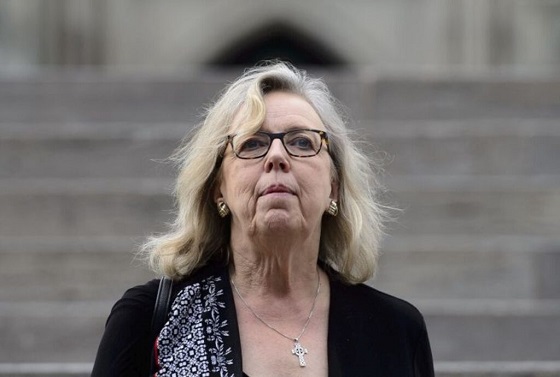
From Energy Now
By Jim Warren
There she goes again. For the second time in three weeks Elizabeth May has tried to mislead Canadians. Most recently May incorrectly claimed oil tankers operating from Prince Rupert would be sailing through Canada’s most dangerous waters and the fourth most dangerous waters in the world.
The previous instance of deception was May’s false claim that Canada was legally bound by an international treaty to meet its green transition and net zero commitments. She told that whopper on November 17, the day the House of Commons narrowly approved the Liberal budget.
Since misconstruing the treaty, May has drawn media attention to a video she released which claims tankers leaving the proposed Northern Gateway 2.0 terminal will travel through the allegedly perilous Hecate Strait which separates the Haida Gwaii islands (formerly the Queen Charlotte Islands) from the West coast of the B.C.
Somebody better tell the B.C. Ferry Service their regularly scheduled runs across the Hecate Strait from Prince Rupert to Haida Gwaii are putting lives at risk.
Online fact checkers have determined the hyperbole regarding the safety of the strait traces back to 1992 and an extraneous comment in the Marine Weather Hazards Manual, West Coast Edition : A Guide to Local Forecasts and Conditions.
The manual indicates high winds can develop quickly over the strait making sailing hazardous for smaller vessels. This is followed by an unsubstantiated comment about it being the most dangerous waterway in Canada. Students of late 20th century history assume the comment is an embellishment based on an anecdote that was improperly inserted by whoever wrote the manual. It is not any sort of official ranking.
Oil tankers are obviously nothing like the small vessels that can encounter problems in the strait. And besides that, loaded tankers leaving Prince Rupert can avoid the Hecate Strait altogether by way of the Dixon Entrance which connects Prince Rupert to the wide open Pacific.
The map shown below was produced by The Hub, one of the fact-checking websites which has challenged May’s false claims about the hazards facing oil tankers at the Northern end of B.C.’s West coast.

Source: Falice Chin (2025, November 25).
https://thehub.ca/2025/11/25/fact-check-elizabeth-mays-tanker-ban-claims-dont-add-up/
May’s outright misrepresentations of the Paris Climate Agreement and the safety of shipping out of Prince Rupert reflect the environmental movement’s all too frequent exaggerations about the dangers posed by climate change and conventional energy.
The argument which follows shows how the Prince Rupert oil pipeline terminal can play a role in the effort to increase global oil tanker safety and reduce the danger of oil spills
If it weren’t for the dark (aka shadow) tanker fleets transporting Russian and Iranian oil, the environmentally alarmed could rest a lot easier about oil tanker safety. Over the past several decades there have been tremendous improvements in oil tanker design and safety technology.
The last major oil tanker spill on the West coast of North America was the 1989 Exxon Valdez oil spill, which resulted in 240,000 barrels of crude being dumped into Alaska’s Prince William Sound.
The Exxon Valdez disaster prompted the US Congress to pass the Oil Pollution Act of 1990. The Act required the gradual phasing in of double hulled construction for new oil tankers. The US Coast Guard claims that if the Exxon Valdez had been a double hulled vessel it would have cut the amount of oil spilled by 60%.
The US double hull requirement has since become the global standard for the design of new, large oil tankers. That being said, there are a number of countries and shipping companies that operate outside the confines of international best practices. These are the countries and companies which facilitate the operation of the world’s dark fleets.
In response to Russian’s invasion of Ukraine in February 2022, the EU, NATO members and several other G20 countries imposed a set of trade and financial sanctions on Russia. The 2022 package was much tougher than sanctions imposed on Russia after its 2014 occupation of the Donbas and seizure of the Crimea.
The new sanctions imposed in 2022 included restrictions on Russia’s ability to export oil into international markets. While some of the sanctions soon proved to be rather toothless, efforts to prevent the world’s major shipping insurers like Lloyd’s of London from insuring ships carrying Russian oil were more successful. Owners of the world’s modern tanker fleets refused to transport Russian crude. It was simply too risky. A tanker accident and oil spill, especially along a coast line or near a major coastal urban centre can be monumentally expensive. Companies operating uninsured or poorly insured tankers would also find it difficult to obtain bank financing and new investors.
It was assumed that the oil sanctions would damage the Russian economy and seriously handicap its ability to wage war against Ukraine. After all, as US Senator John McCain famously said, “Russia is a gas station masquerading as a country.” Oil and natural gas have kept the Russian economy afloat since the collapse of the Soviet Union.
Russia’s friend, Iran, has been dodging oil sanctions for decades and happily shared that know how with its pals at the Kremlin. For starters, Russia’s oil exporters needed to gain access to tankers owned by operators who didn’t worry about insurance or if they were insured it was by shady companies operating out of countries that weren’t too worried about things like oil spills.
In relatively short order, Russian oil interests acquired a fleet of dark tankers which could be operated outside the bounds of properly insured shipping. Over the course of 2022 and 2023, the market price for old, used oil tankers which had outlived their best before dates but could still float more than doubled. Many of the derelict rust buckets lacked modern double hull construction.
The size of the world’s sanctions dodging dark fleets doubled after February 2022. Today it is estimated to be somewhere between 1,000 to 1,400 ships. Most of the ships are oil tankers but some are container vessels.
Since the vast majority of the older ships in the dark fleet are small to mid-size tankers it makes sense to transfer the Russian oil into larger tankers, on the open ocean, far from prying eyes. This reduces overall shipping costs and facilitates laundering of the oil. Once it is in the larger tanker Russian oil looks like anybody else’s oil. While transferring oil from ship to ship can and is done very safely, it becomes less safe when one of the ships is a floating pile of scrap iron.
In 2023, The Economist reported that Malaysia and the UAE were suddenly selling more than twice as much oil as they are capable of producing in a year. It’s alleged they are operating as middleman states which facilitate the laundering of Russian oil. The Economist claimed that Russian oil revenues fell in 2023. However, they returned close to pre-sanctions levels by the end of 2024. In other words, the sanctions have been a flop.
Despite the practice of transferring oil to larger ships, most Russian oil is transported all the way from Russia to final customers on smaller shadow fleet ships. Many of the ships in the dark fleet are chronic leakers and vulnerable to larger spill events. Luckily for the Russians, there are ports in China and several developing countries like India, and Malaysia willing to accept shadow fleet shipments. Some port operators are prepared to accept tankers insured by sketchy or fake insurers. Port authorities in these countries are willing to look the other way when antique tankers hemorrhage oil into their harbours. Not all spills and leaks are reported, so the full extent of the environmental harm is unknown.
It’s only a matter of time before one or more of the floating sieves in the dark tanker fleet causes a major oil spill in international waters that captures the world’s attention. Denmark has recently taken action against defective dark fleet tankers transporting Russian oil from the Baltic to the Atlantic. The ships have to pass through narrow straits controlled by Denmark where there is a somewhat higher risk of accidents. Last month, the Royal Danish Navy began randomly stopping and inspecting tankers carrying Russian oil.
The takeaway worth noting here is that should Northern Gateway 2.0 be approved and actually built, every barrel of oil shipped from the Prince Rupert terminal will be a barrel that Russia cannot sell via its shadow fleet. It will be a barrel of oil transported by double hulled, state of the art tankers. Furthermore every barrel of oil shipped from Prince Rupert will be a barrel of oil that will not subsidize Russia’s war against Ukraine.
Elizabeth May, you are wrong again. The oil pipeline from Alberta to Prince Rupert stands to contribute to greater global tanker safety in part because it can contribute to a loss of Russia’s market share in the Asia Pacific region. Shipments from Canada crossing the Pacific using large, modern tankers will cost far less than the cost of shipping over longer distances using smaller (less safe and efficient) ships to transport oil from Russia to that part of the world. Canadian producers should have the ability to sell their oil profitably at a lower price than Russian competitors need to obtain due to their much higher transportation costs.
Of course, profitability for Canadian exporters will depend on how high any carbon or other environmental taxes Ottawa imposes might be.
National
Alberta will use provincial laws to stop Canadian gov’t from trying to confiscate legal firearms
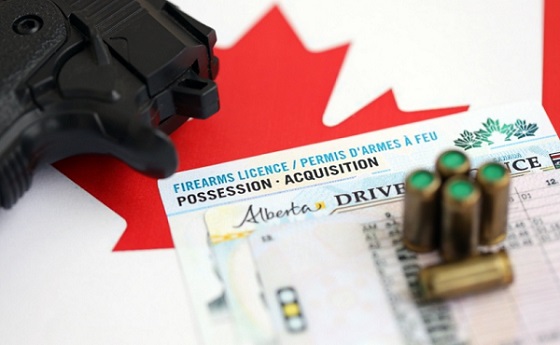
From LifeSiteNews
Premier Danielle Smith confirmed that her government will introduce a motion to protect lawful gun owners from improper seizures and prosecution.
Alberta Premier Danielle Smith confirmed what she has promised for over a year now that her government will use its laws to stop Liberal Prime Minister Mark Carney’s federal gun-grab of legally purchased firearms from taking effect in the province.
“I just announced that our government will introduce a motion under the Alberta Sovereignty within a United Canada Act next week,” she posted on X over the weekend.
“This motion will protect lawful gun owners from improper seizures and prosecution, and ensure Albertans can protect their homes, families, and property.”
Smith’s motion was officially revealed on Tuesday. It reads, “A new motion under the Alberta Sovereignty within a United Canada Act will, if passed by the legislature, instruct all provincial entities, including law-enforcement agencies such as municipal police services and the RCMP, to decline to enforce or implement the federal gun seizure program.”
“The motion also makes clear that Albertans have the right to use reasonable force to defend themselves, their families and their homes from intruders,” it notes.
Smith has many times before, as reported by LifeSiteNews, promised her province will refuse to participate in his planned gun buyback program that aims to seize the legally purchased guns of Canadian firearm owners.
Alberta’s “Sovereignty Act” allows it to ignore federal laws that the province views as being unconstitutional.
Smith’s United Conservative Party (UCP) recently held its AGM, at which a motion to support so-called “Castle Laws” was introduced and passed.
She was recently quoted as saying, “If you don’t want to get shot, don’t break into someone’s house.”
Smith has promised that her government will introduce a so-called “Castle Law” to protect the rights of homeowners.
Violent crime against homeowners is on the rise in Canada. As reported by LifeSiteNews, Conservative leader Pierre Poilievre lashed out at Carney’s “catch and release” bail laws, saying they need to be rescinded while adding Canadians have a “right” to defend their homes. He made the comments after a 46-year-old father died defending his family home.
The Canadian government’s controversial gun grab Bill C-21, which bans many types of guns, including handguns, and mandates a buyback program became law on December 14, 2023, after senators voted 60- 24 in favor of the bill.
In May 2023, Bill C-21 passed in the House of Commons. After initially denying that the bill would impact hunters, former Prime Minister Justin Trudeau eventually admitted that C-21 would indeed ban certain types of hunting rifles.
Trudeau’s gun grab was first announced after a deadly mass shooting in Nova Scotia in May 2020 in which he banned over 1,500 “military-style assault firearms” with a plan to begin buying them back from owners.
Late last year, the Trudeau government extended the amnesty deadline for legal gun owners until October 30, 2025. It should be noted that this is around the same time a federal election was to take place.
When it comes to gun-related deaths in Canada, as reported by LifeSiteNews, Statistics Canada data shows that most violent gun crimes in the country last year were not committed at the hands of legal gun owners but by those who obtained the weapons illegally.
-
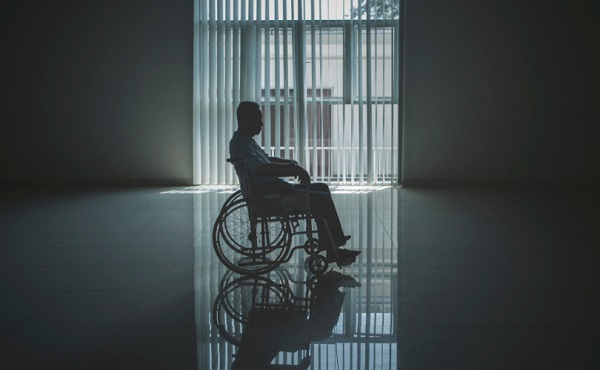
 MAiD2 days ago
MAiD2 days agoFrom Exception to Routine. Why Canada’s State-Assisted Suicide Regime Demands a Human-Rights Review
-
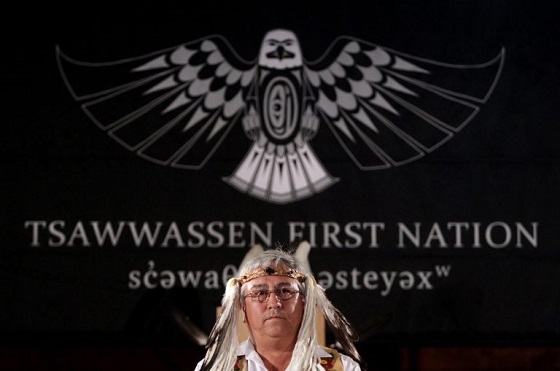
 Energy2 days ago
Energy2 days agoUnceded is uncertain
-

 Business2 days ago
Business2 days agoCarney government should privatize airports—then open airline industry to competition
-

 Alberta1 day ago
Alberta1 day agoCarney’s pipeline deal hits a wall in B.C.
-

 Alberta1 day ago
Alberta1 day agoAlberta Sports Hall of Fame Announces Class of 2026 Inductees
-
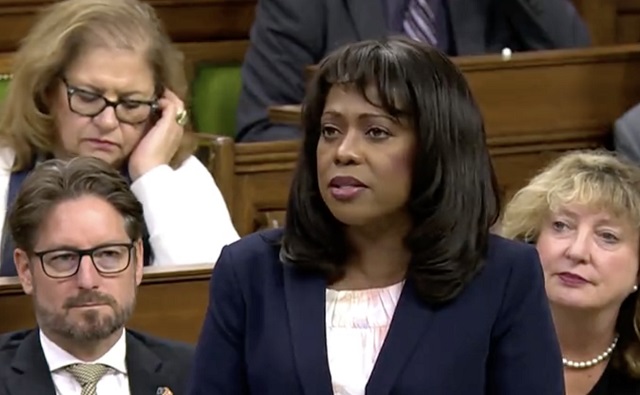
 Censorship Industrial Complex1 day ago
Censorship Industrial Complex1 day agoConservative MP Leslyn Lewis slams Liberal plan targeting religious exemption in hate speech bil
-

 Business2 days ago
Business2 days agoWhat’s Going On With Global Affairs Canada and Their $392 Million Spending Trip to Brazil?
-
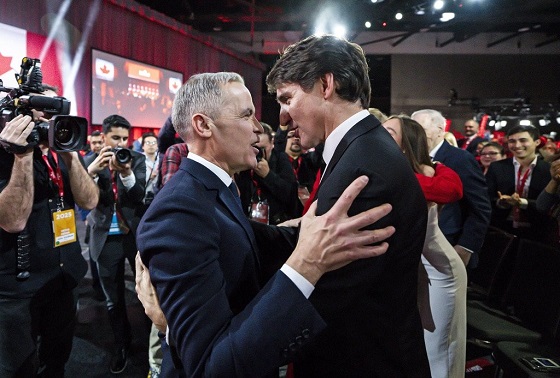
 Business2 days ago
Business2 days agoIs Carney Falling Into The Same Fiscal Traps As Trudeau?






